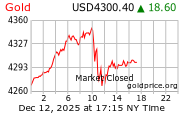"All the time our customers ask us, how do you make money doing this? The answer is simple, volume."Beginning stock traders often wonder, what does volume really mean? Why do I care about volume? For every buyer there is a seller and for every seller there is buyer, right? But didn't the news guy just say prices fell because there were more sellers than buyers, or vice versa?
- FIRST CITIWIDE CHANGE BANK [Click for SNL video]
Who's right? Neither of them. And, volume is extremely important, as important as price.
You can have 1, 000 bidders and 1,000 sellers and see 0 transactions. Or, you can have 1,000 bidders and 1,000 sellers and have 1,000 transactions. Or, you can have 1,000 bidders and 1 seller and have 0 transactions. Or you can have 1,000 sellers and 1 bidder and 0 transactions. You can even have 1,000 bidders and 1,000 sellers and have 1,019 transactions.
For some reason, people intuitively understand the importance of trading volume in everyday markets, but they have trouble getting their head around stock trading volume. So let's draw an analogy between an everyday market and the stock market, and volume will make intuitive sense. It's extremely important to understand volume, as the current Dow chart, below, illustrates.
Let's say you live in a town in California that was hit hard by the liquidity drain. In 2005, people were crawling through model homes and paying top dollar. Let's say builders in your neighborhood sold 30 homes a month at high prices.
Then, suddenly, volume fell sharply to just 5 closings per month. Builders thought the slowdown was a blip that would soon reverse, so they held the line on prices and blew up more balloons and baked more cookies.
Then, only 3 closings per month, while prices held up.
Then, just 1 closing, at a 10% premium over the last sale.
The realtors called a meeting. Some were concerned, others were ecstatic. The ecstatic group held up a chart of steadily rising prices. The concerned group pondered a big decline in sales volume. Revenue was down, so the builders sided with the concerned group and decided to lower prices. Immediately, sales volume increased. When prices were lowered more, sales rose more. Soon, builders noticed their charts indicated that as home prices fell, the number of transaction grew, and vice versa.
Why? Because their price is still too high. Because any price sans volume = the wrong price.







FDR.... Thank you.... "any price sans volume = the wrong price.". There is no way to state this any simpler.
ReplyDeleteGreat Post FDR...you seem to know what I don't know I need to know, and tell us in a way that we then know.
ReplyDeleteThank You,
-Tewkatz
P.S. We miss you on MW. :)
Ha, I enjoyed that post.
ReplyDeleteFDR: you officially done posting on MW? I definitely sense that the MW blogs have become infested with trolls & a few annoying permabulltards.
ReplyDelete"FDR: you officially done posting on MW? I definitely sense that the MW blogs have become infested with trolls & a few annoying permabulltards."
ReplyDeleteI don't know. Mostly. The format makes it difficult to justify time spent.
I do enjoy reading the MW writers' advice so I can rule out those options.
FDR - really enjoyed the article. You definitely have a uniqua informative view. Recommending this site to anyone who will listen.
ReplyDeleteFDR-what numbers are associated with high and low volume for the stock market, and where can one find reliable source info to determine whether the volume is high or low?
ReplyDeleteQuestion: FDR-what numbers are associated with high and low volume for the stock market, and where can one find reliable source info to determine whether the volume is high or low
ReplyDeleteThis is basic technical analysis, which you would need to learn, at websites like finance.yahoo that provide free charts and stock quotes. You can use those stock charts for volume...